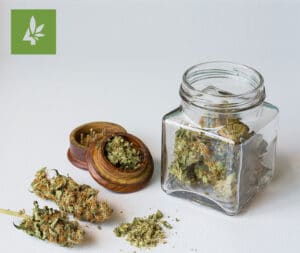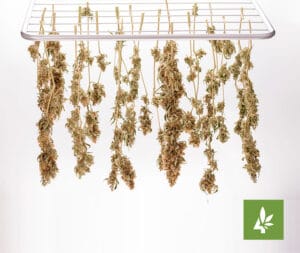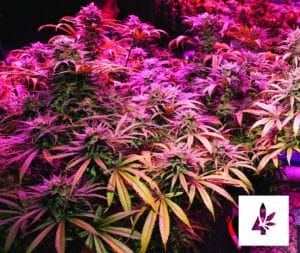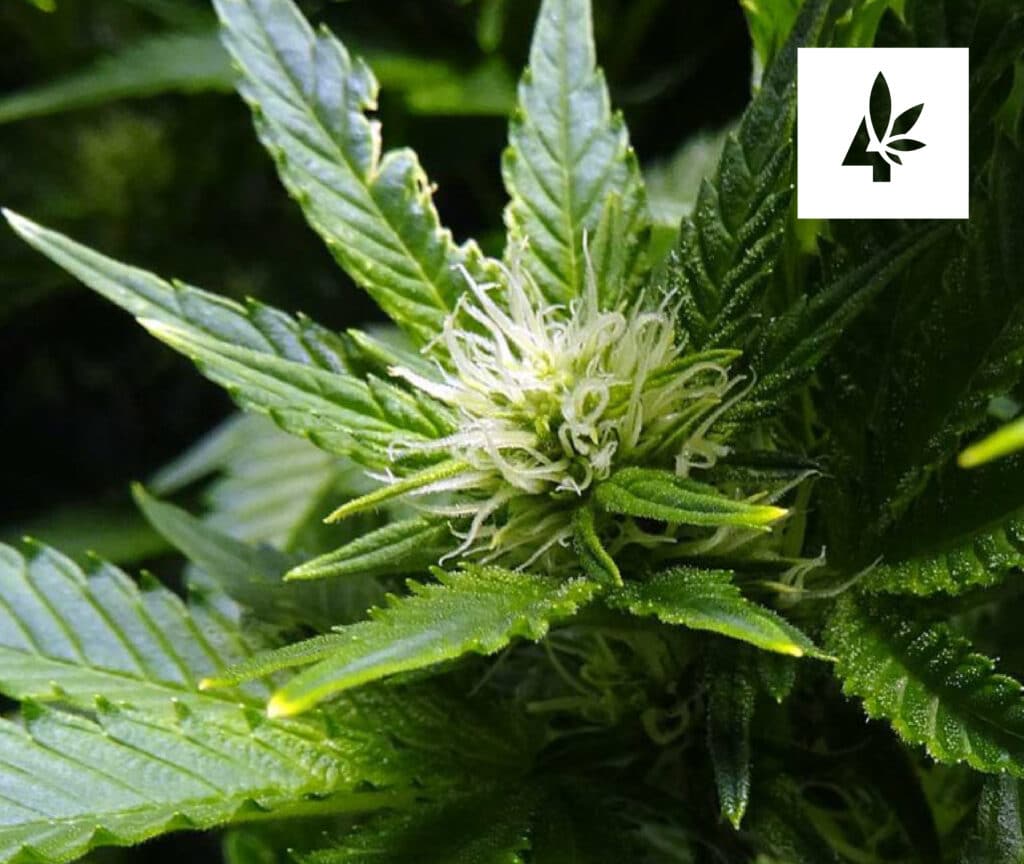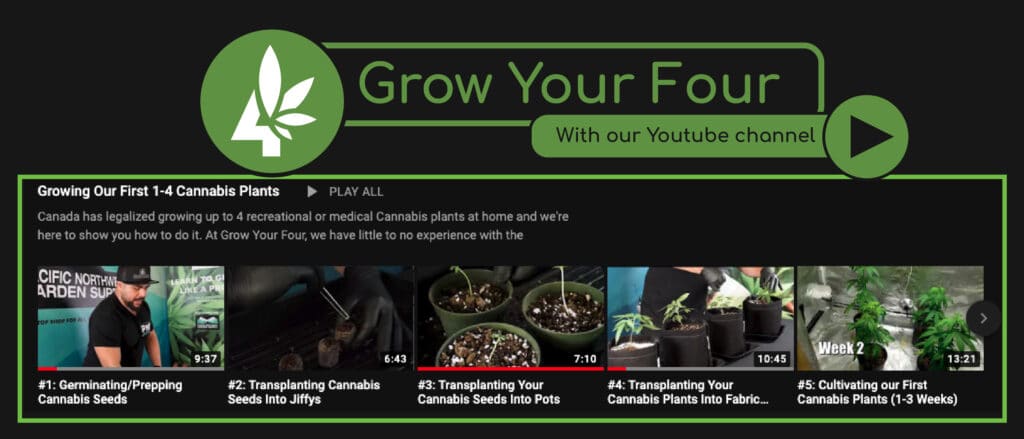If you’re happy with your cannabis plant’s size, it might be time to transition them into the flowering stage. Cannabis plants are photoperiod-dependant. This means the growth patterns of cannabis plants are influenced by the amount of light they receive.
For instance, growers can regulate vegetative growth by giving cannabis plants 18 or more hours of light per day. To elicit flower development, gardeners must provide their plants with 12 hours of light and 12 hours of darkness per day until harvest. The transition stage of growth is immensely important. Some varieties of cannabis can stretch drastically and cause overlapping, shading, and spacing issues. Along with this growth spurt, fast-growing cannabis plants require different feeding routines and special environmental controls to manage the development and progression of flower sites.
Read the following passages for more tips on transitioning cannabis plants into the flowering stage.
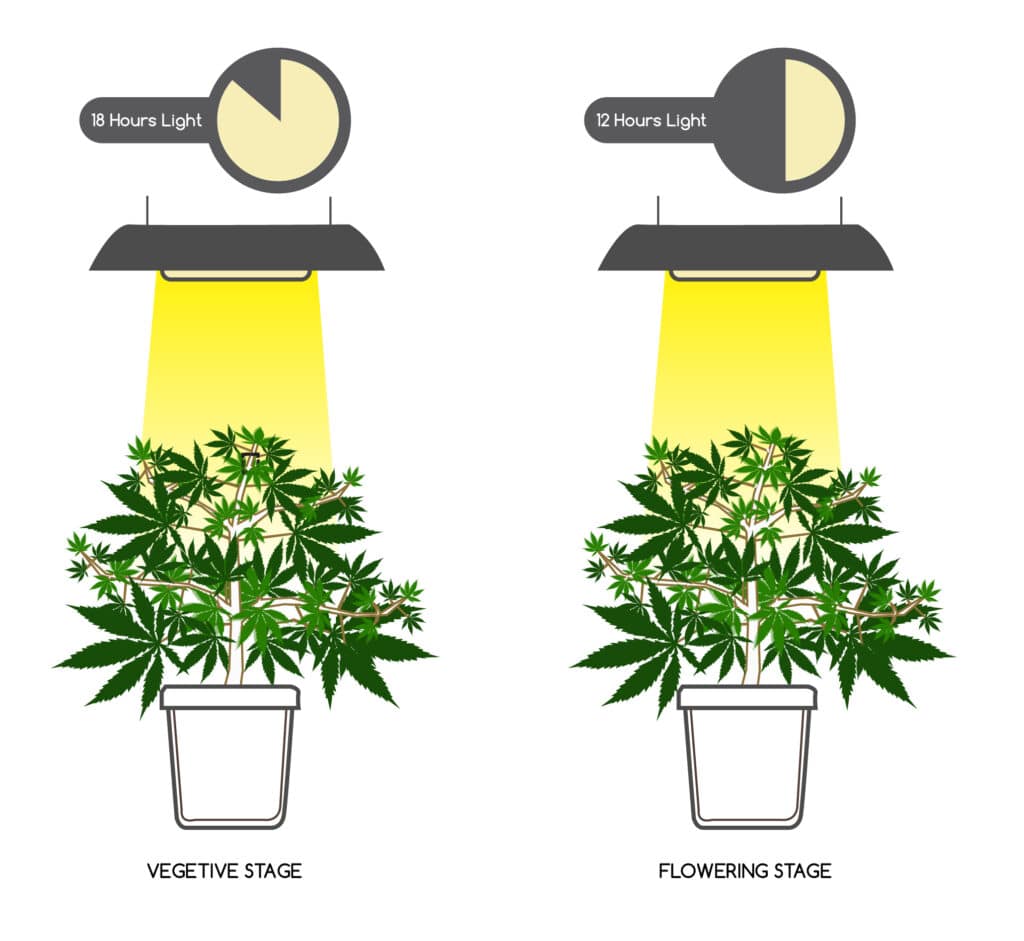
What Happens During the Transitioning Period? (Weeks 1-2)
The “transitioning” period refers to the time between vegetative and flowering growth. Fully formed flowers don’t show up on your plant overnight; for most cannabis plants, the flowering period can last up to nine weeks. Many stages of flower development take place within these weeks. So, what can growers expect during the transition period of growth?
Growers can expect their plants to almost double in height. A change in photoperiod sends signals to the plant that the growing season is coming to an end. Female cannabis plants digest this information and revert growth hormones from root and leaf production into the development of flowers. This causes cannabis plants to stretch drastically towards the light source. These vigorously growing plants will now require heavier feedings and more frequent irrigations to support the rapid development of future flower sites. At the same time as this stretch, growers may notice the expression of “pistils”, or flowering hairs that intersect at the nodes of branches. Soon after the transition period, these small pistils will be the site of fully formed cannabis buds.
Things to Expect in the Transition Stage:
1.) Plant Stretching.
2.) Heavier Feedings.
3.) More Frequent Irrigations.
4.) White Hairs Called Pistils
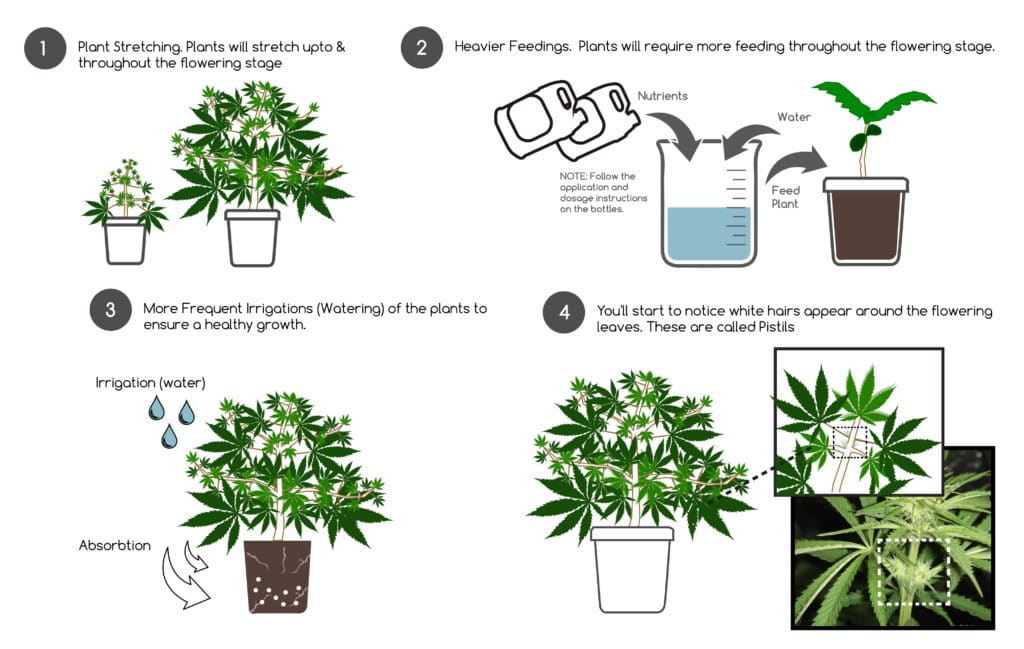
Tips on Transitioning Cannabis Plants into the Flowering Stage
Step #1: Determine if Your Cannabis Plant’s are Ready to Begin the Flowering Stage
The transitioning period of flowering growth is an extremely important time for developing plants. Before you decide to change your garden’s light cycle, make sure your plants are ready to begin the flowering stage. You can do this by inspecting the health and size of your crop. First, check for things like pests, nutrient deficiencies, and plant disease. These issues are always a headache, however, they are arguably easier to remedy during the vegetative stage. Remember, the transitioning period is already a stressful time for plants. Since the issues above will likely worsen in the flowering stage, consider waiting until your plants are healthy before entering the transitioning period.
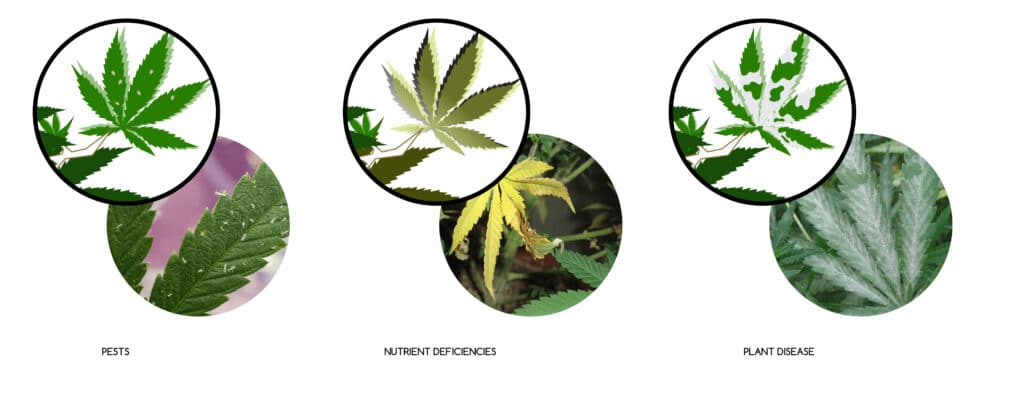
Next, consider the size of your plants. If we assume that most cannabis plants will double in size during the transitioning phase, make sure that you have enough room above your canopy to support your fully grown plants. Also, keep in mind that some high-intensity lights have distance requirements of up to 30-inches. So, be sure to factor in the distance requirement of your light source before transitioning your vegetative plants into flower.
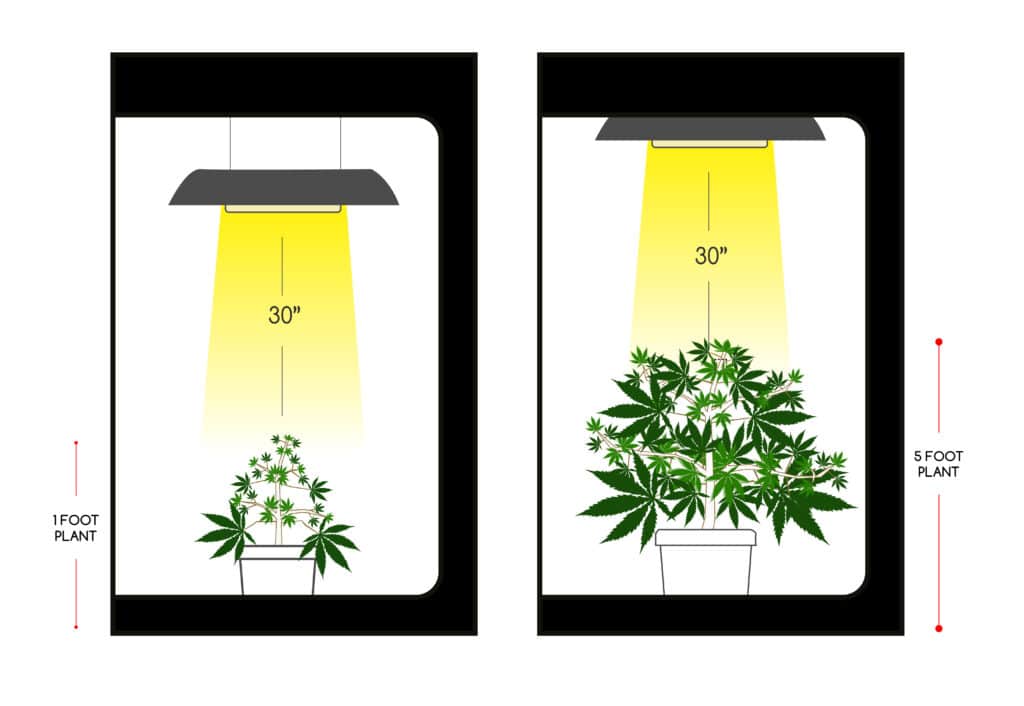
Step #2: Change Your Photoperiod to 12/12
To begin the transition phase, start by changing your daily light cycle to 12 hours of light and 12 hours of darkness. Cannabis plants are annual growers. In the wild, for example, cannabis plants will grow from seed to flower from spring to fall. However, since we can control the environment in an indoor garden, growers are responsible for signaling flowering plant growth. When you switch your timer to a cycle of 12/12, your plants will be tricked into thinking that the growing season is becoming shorter. This environmental cue will be met by plants attempting to express their flowers as quickly as possible.

Step #3: Be Prepared to Feed Heavier and More Often
Following the growth spurt during the transitioning period, be prepared to irrigated your cannabis plants more often and with higher levels of plant food. It’s an industry consensus that levels of fertilizer should be increased after entering the flowering stage. Take GreenPlanet Nutrient’s Dual Fuel feeding program as an example. As you can clearly see, the Parts per Million (PPM) of your nutrient solution should be increased to a range of 750-850 in week 1 of flower, as opposed to the late vegetative range of just 550-650. Also, pay close attention to the drinking habits of your plants, and be prepared to irrigate your crop more frequently.
Step #4: Monitor Your Cannabis Plants and Track Their Progress
After transitioning your plants into the flowering period, it’s important to monitor their progress. Pistils will appear approximately 10-14 days after your initial light cycle change. Pistils are white hairs that signal the future development of female cannabis flower and usually sprout at intersecting nodes or tops. However, if you’re unsure about the sex of your plant, keep an eye out for the expression of pollen sacs. Unlike female cannabis plants that produce buds, males produce pollen sacs. Any plants exhibiting these characteristics should be carefully removed from the growing space.
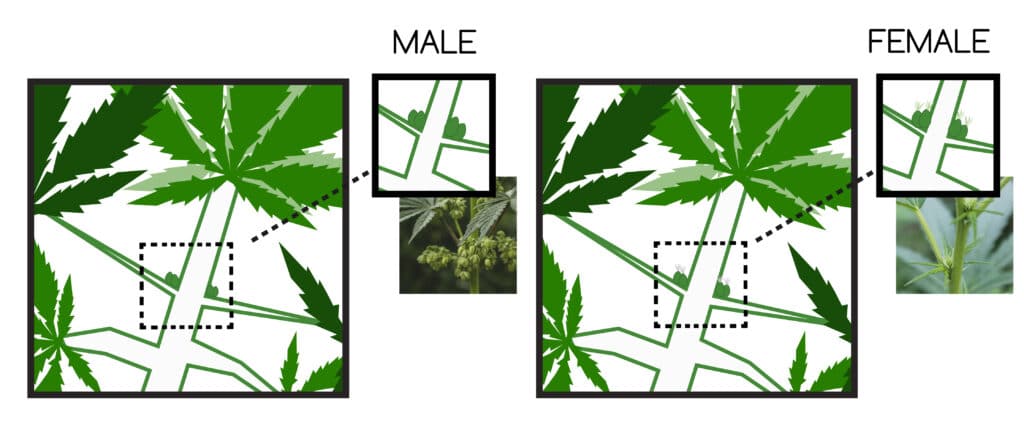
Tip: Place a garbage bag over male plants before removing them from the growing space. Pollen sacs are extremely volatile. If removed aggressively, male pollen sacs can burst and spread pollen throughout the growing space, effectively exposing female plants to the male reproductive process. This exposure can cause your female plants to produce flowers littered with seeds.

Congratulations on growing cannabis at home! Join us for more information about growing cannabis. For more tips on transitioning your plants into the flowering stage, contact our team at Grow Your Four.
Join us for more information about growing cannabis at home! For more tips on transplanting your cannabis seedlings into pots, contact our team at Grow Your Four.
Read More
- Tips on Curing Homegrown CannabisAfter your cannabis is dried and processed, it’s time to think about curing, burping, and re-humidifying your crop to the perfect smoking and vaping consistency.
- How to Trim Cannabis to Perfection in 7 Easy StepsIt’s true – trimming cannabis is one of the most monotonous jobs in the garden. But much the like process of knitting handmade fabrics, hand-trimming
- Grow Your Four’s Guide to Harvesting and Drying CannabisBy the end of week 8, your plants will likely be ready for harvest. Harvesting cannabis involves the important process of carefully drying plants to

